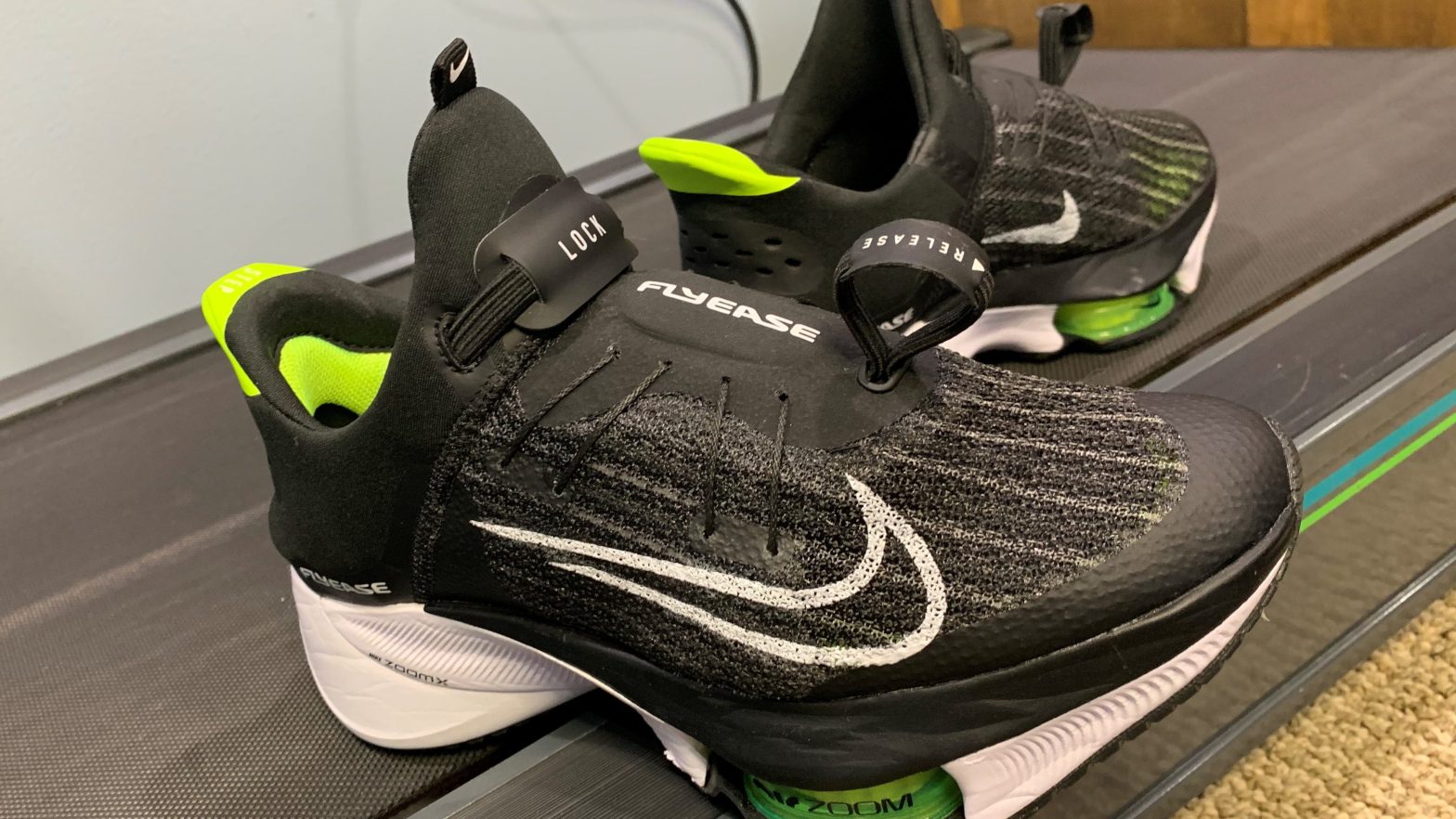Am I the only one that dreams of being a professional runner?
Before my last race, I hired a coach with the express goal to help me compete, not just complete, in an upcoming triathlon. A month before the race, I’m in the best condition ever and I brought up my chances of winning in my age category. “Hmm,” Kristin paused briefly. “Professional runners put in lots of work, have the very best equipment, and will be there to compete too.”
More work or better equipment? I heard about a cool new pair of running shoes from Nike. The Flyease shoes start with great performance technology and offer unique features like slip-on ease and skip the lacing entirely. This is the perfect pair to save time transitioning from bike to running for me. It’s like Nike designed these just for me.
But, these shoes were designed for a real Nike athlete, Justin Gallegos. Here’s the design story of Nike and Justin Gallegos who needs a high performance shoe that complements his cerebral palsy. Nike and this technology make using these shoes easy when you have cerebral palsy.
Combining universal design principles with Justin’s needs delivered market innovation for many people
I’m glad Nike made this shoe for Justin. He’s the professional runner in this story. In my opinion, Nike found it’s innovation by applying the principles of universal design and interacting with Justin. Those with disabilities have big spending power, according to A Hidden Market: The Purchasing Power of Working-Age Adults With Disabilities The market for these shoes is so much larger than for individuals with physical disabilities. As a business, introducing new product ideas and having a close relationship with diverse markets is smart and profitable.
Here are just two principles of Universal Design featured in these shoes that make them the best shoe for some of my favorite people
- Low Physical Effort. Definition: The design of the product or environment should require little to no physical effort to use. You can slip these shoes on and have an immediate great fit. People in my life who need these shoes include pregnant Amy R. who can’t see her feet let alone reach them and Andy M. whose giving his all in physical therapy from a recent ski accident. Putting his shoes on himself would give this teenager just a step of independence.
- Tolerance for Error. Definition: The design should also anticipate any unintentional actions that may occur during use. These shoes won’t untie which avoids problems for lots of people. People in my life who need these running shoes are the other runners in my triathlon but we won’t tell them, right? And any house with a dog like our Tucker, the very productive shoe-untying Golden Retriever. He’s out of luck with these shoes!

Product Accessibility LLC works with consumer businesses using universal design principles for product innovation
It’s not possible for most businesses to have the skills and make the time to identify and incorporate accessibility features to drive product innovation and reach more people. Many business leaders prefer partnering with a champion and certified professional. That’s our business – Product Accessibility LLC.
The Accessibility Evaluation offered by Product Accessibility LLC is a great report to help businesses identify strategies designed for their products to reach more people in their target market. Reach out to connect.

Love this article! – ‘The market for these shoes is so much larger than for individuals with physical disabilities.’ – This is a nearly universal statement about Universal Design: Replace the words ‘these shoes’ with any number of inventions/modifications sparked by disability considerations and the statement remains true! I’m particularly reminded of Kurzweil inventing a machine that read books aloud to the blind… This landmark invention necessitated the patent of software that could reliably identify alphanumeric characters rendered in many languages and countless fonts (which kind of sounds a bit extra just to reach such a ‘limited’ market with ‘limited spending power.’ Yet, who hasn’t used OCR technology sometime within the past workweek? The digital revolution and mass corporate move to paperless may never have happened without Kurzweil being ‘a bit extra’ and perfecting font recognition technology so I could get through college without paying 5 bored students to read to me when Braille textbooks were late or unavailable.
LikeLike
Thanks, Sara!
LikeLike